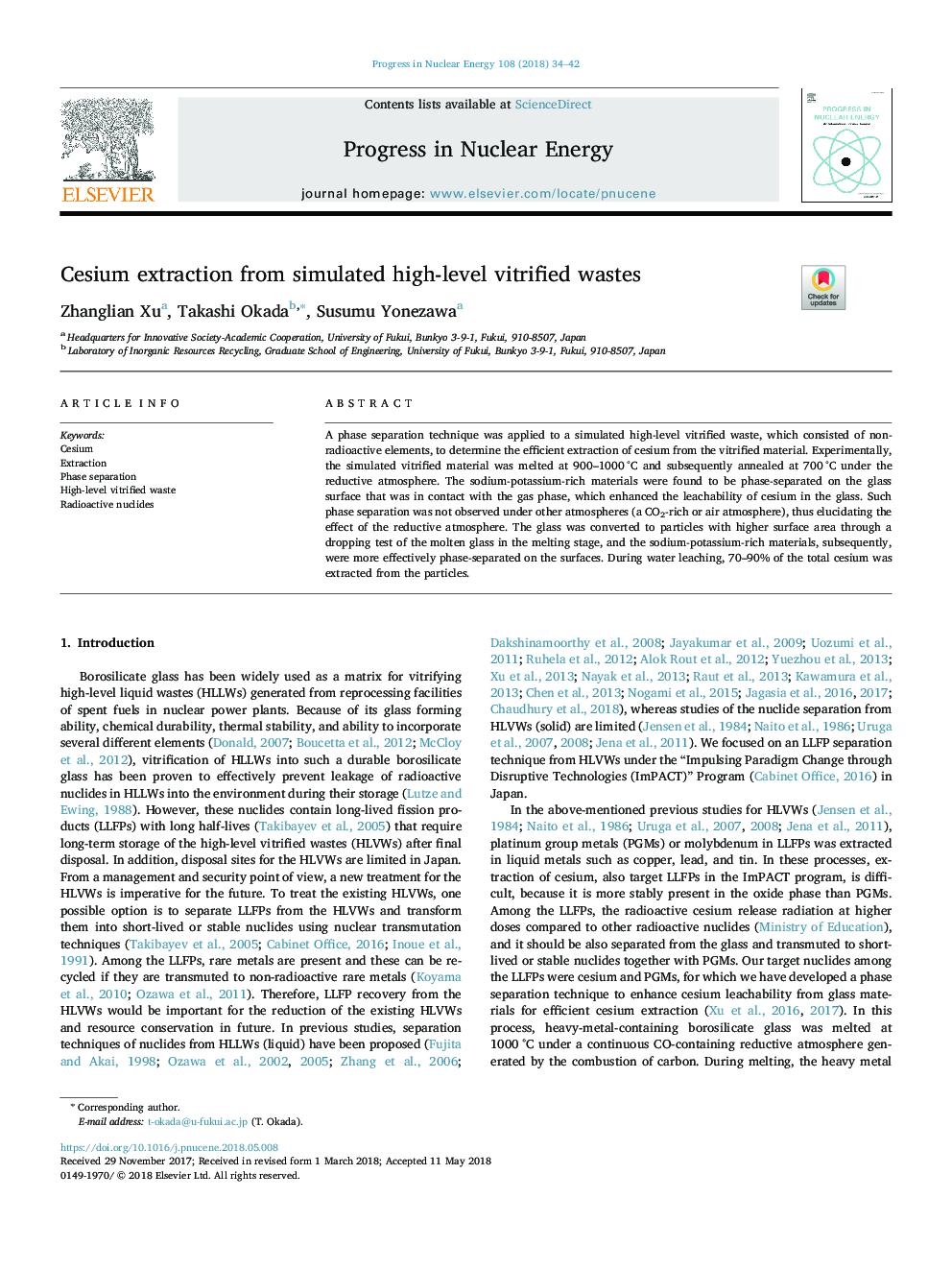| Article ID | Journal | Published Year | Pages | File Type |
|---|---|---|---|---|
| 8084058 | Progress in Nuclear Energy | 2018 | 9 Pages |
Abstract
A phase separation technique was applied to a simulated high-level vitrified waste, which consisted of nonradioactive elements, to determine the efficient extraction of cesium from the vitrified material. Experimentally, the simulated vitrified material was melted at 900-1000â¯Â°C and subsequently annealed at 700â¯Â°C under the reductive atmosphere. The sodium-potassium-rich materials were found to be phase-separated on the glass surface that was in contact with the gas phase, which enhanced the leachability of cesium in the glass. Such phase separation was not observed under other atmospheres (a CO2-rich or air atmosphere), thus elucidating the effect of the reductive atmosphere. The glass was converted to particles with higher surface area through a dropping test of the molten glass in the melting stage, and the sodium-potassium-rich materials, subsequently, were more effectively phase-separated on the surfaces. During water leaching, 70-90% of the total cesium was extracted from the particles.
Related Topics
Physical Sciences and Engineering
Energy
Energy Engineering and Power Technology
Authors
Zhanglian Xu, Takashi Okada, Susumu Yonezawa,
